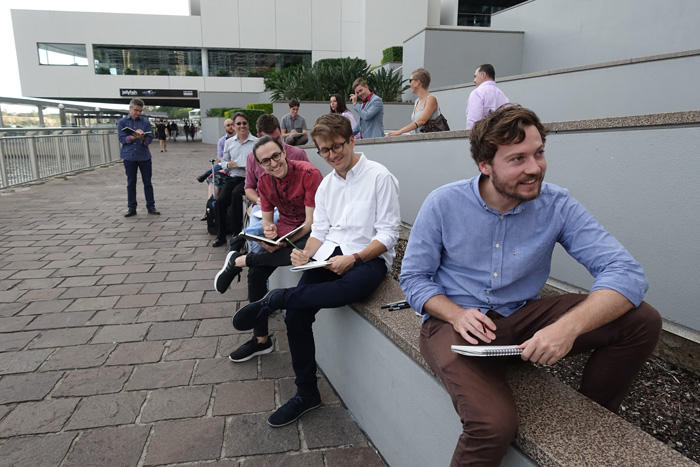
I have just finished 6 private workshops specially designed for architects and it was a most rewarding experience! I took two groups from BVN Architecture’s Sydney and Brisbane offices through a 3-workshop programme based on the first half of my Foundations course. I taught the fundamental concepts from that course however because they were an ‘advanced beginner’ group, I was able to apply the basics to complex scenes straight away.
The core of the workshops was my three way of visual thinking: feeling edges, abstracting shapes and constructing volumes.
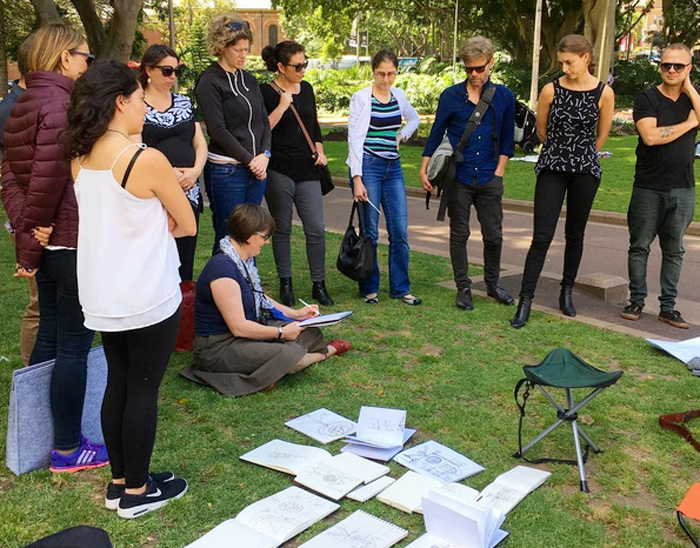
One of the most exciting parts of teaching these two groups was that I felt as if I was teaching my former self (10 years ago before sketching). To make a generalisation of the group, they had a confidence with lines, good drawing skills, a strong aesthetic and an analytical way of looking at the world, but needed to learn how to see edges, relationshipp and shapes. (Note: everything comes back to these skills!)
They were very strong on constructing volumes, but not so much on feeling edges and abstracting shapes. As architect’s, their mind-hand coordination was strong (drawing designs of imaginary buildings and spaces) but not so much their eye-hand coordination (just as I was pre-sketching). You can read a little more about this in my report on the first workshop.
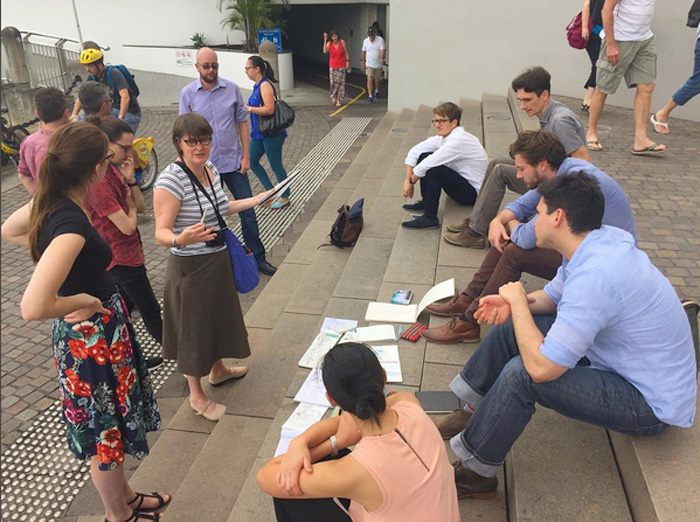
Another really interesting aspect of these workshops was teaching the same content over consecutive weeks but in different cities. As a result the Sydney and Brisbane workshops had a slightly different emphasis. This made it very rich for me as an instructor and is one of the reasons why I love teaching urban sketching workshops so much – every location is unique so the responses are varied.
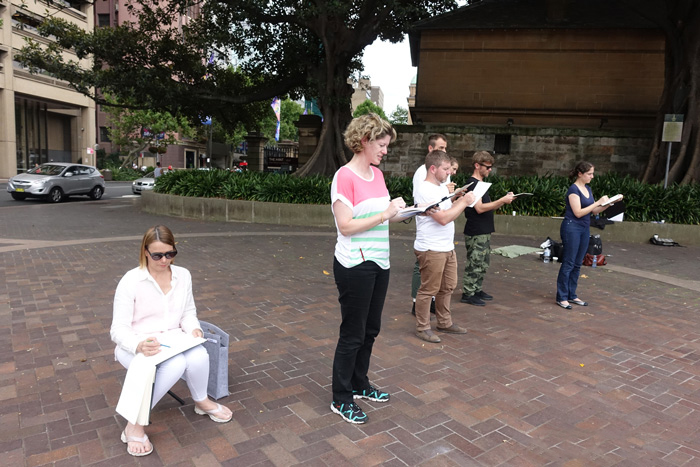
It was also wonderful for me to be hanging out with a bunch of architects again. I absolutely love what I am doing these days (supporting myself with my art and teaching) but I do miss being an architect at times. I decided that I wanted to be an architect at age 10, so there is a little bit of ‘guilt’ in leaving the industry as it was so much a part of my identity. Doing these workshops has been a great way to still feel connected – talking about BIM, design processes, fast tracked projects, crazy deadlines and testing out VR!
Here is a quick overview of the different lessons…
Workshop 1: Ways of Seeing – Objects
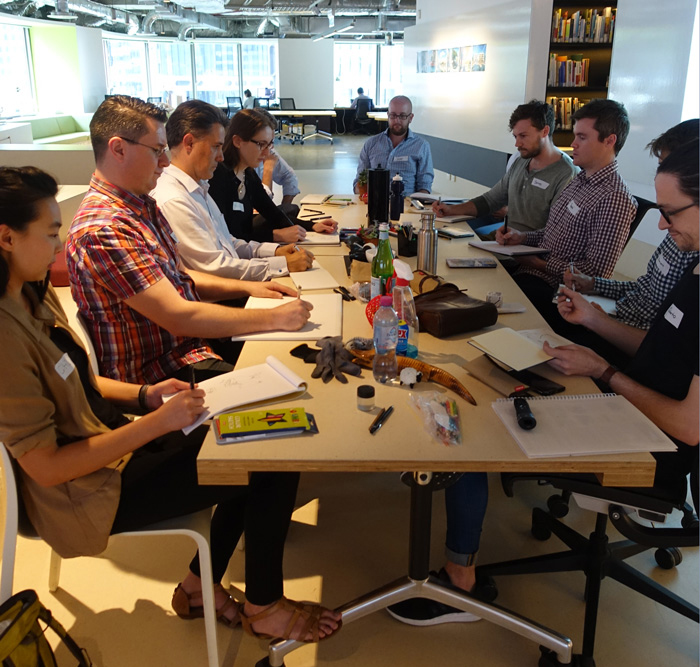
An indoor workshop working through a few ‘feeling edges’ and ‘constructing volumes’ exercises with a selection of objects on the table. These exercises introduced a number of important strategies for creating depth when drawing a collection of objects and we all learnt so much sharing the challenges created by drawing various compositions.
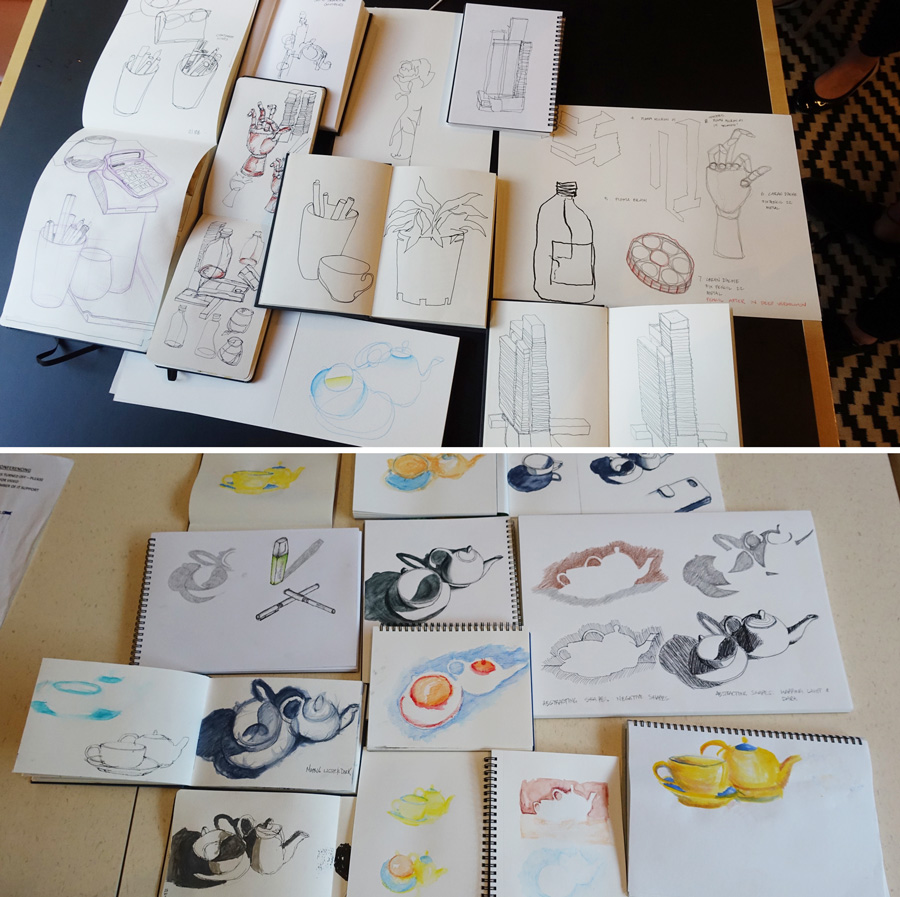
We then did some shape based exercises all working from the same photo that was specifically designed to highlight some important concepts. It was great to see how different everyone’s response was and to see some creative responses to the exercises.
Workshop 2: Ways of Seeing – On Location
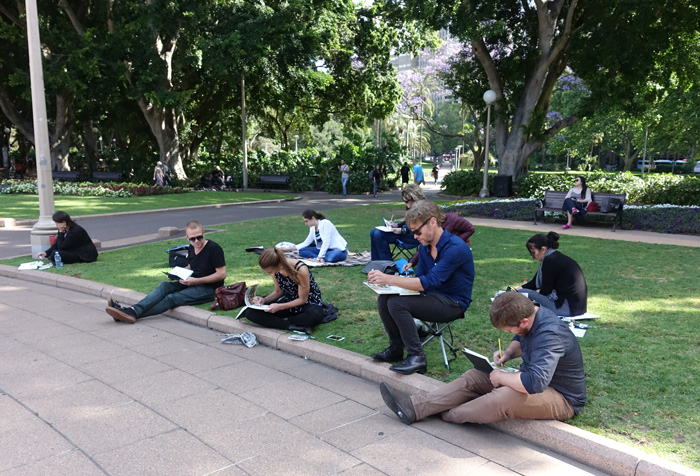
In the next workshop we went outside and applied these principles to a more complex scene.
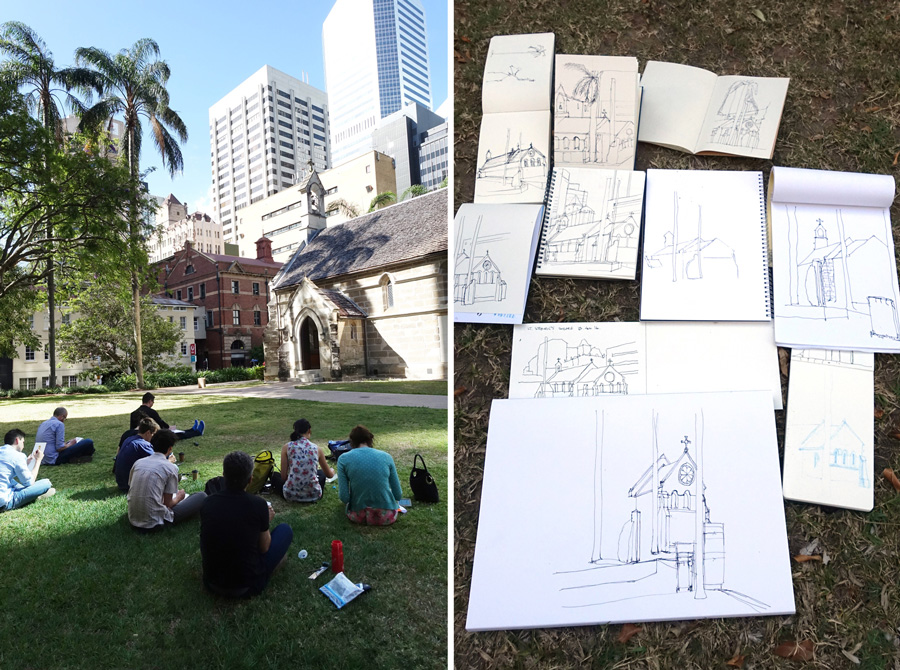
I used a new exercise that involved a vertical edge and I was really pleased with the results.

The shape exercises were generally enjoyed the most by people.
Workshop 3: Ways of Improving Accuracy

In the third workshop I taught how to do sight measuring (‘measured setup’) and then my personal favourite, ‘gestural setup’.
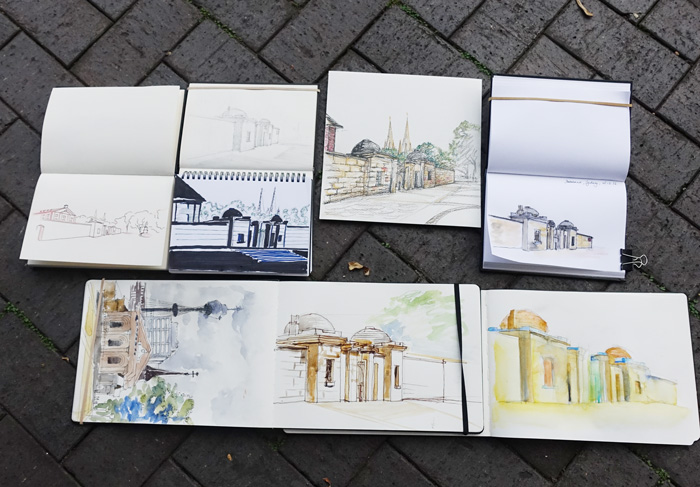
We also tackled extreme foreshortening in the Sydney group. Notice a very strong sense of perspective in these sketches. I didn’t have to explain that at all!
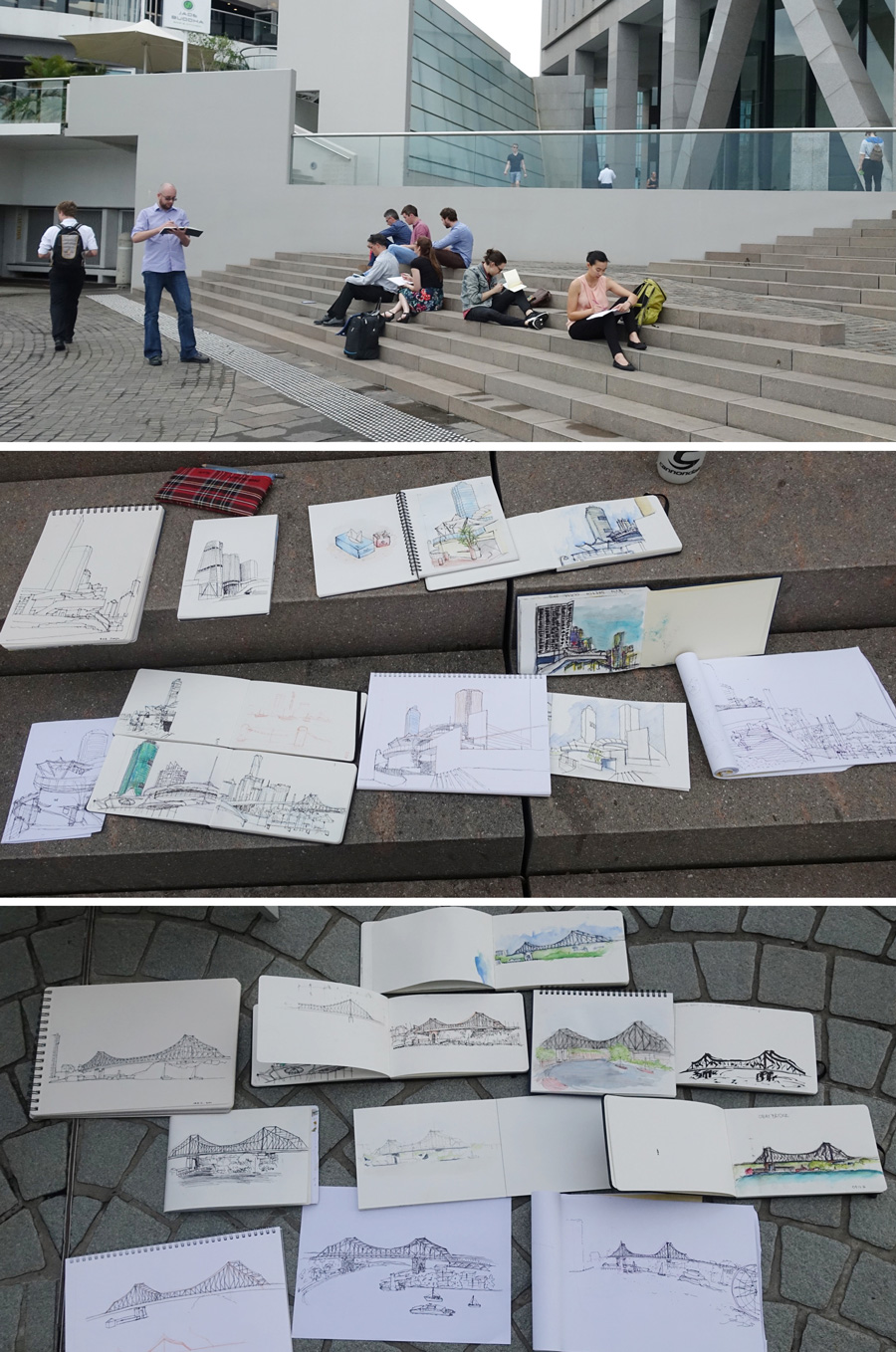
In the Brisbane group due to some flight dramas (my plane was delayed 3 hours) I didn’t have the time to find a good example of extreme foreshortening so instead we tackled ‘a little foreshortening’ coupled with the challenge of simplifying a crazy complex structure – Story Bridge. Although a different type of exercise from the sandstone walls that the Sydney gang sketched, it really suited the Brisbane group.
It is so unbelievably exciting that BVN are investing in the sketching skills of their staff, and I am so honoured to be sharing my knowledge with some incredible groups of architects. A huge thanks to the first Sydney and Brisbane groups for being such an inspirational bunch to teach. I’m looking forward to more workshops in 2017!
It is also great to apply my Foundations content at a higher level, reinforcing to myself once again how vital these concepts are to any sketching that I do. For more information about Foundations click here, and keep an eye out for tomorrow’s post.
I would love to hear from any of my readers who are architects. Do you sketch? When you started did you find that you needed to learn new observational skills?




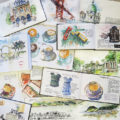
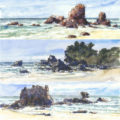
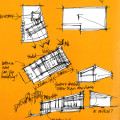
5 Comments
Yes, I sketch, practiced architecture until I left it to pursue art, and am an artist.
I think computers have hurt younger crops of architects in the way they think and create — ALL of us drew, none of us had trouble drawing and understanding complex ways of drawing. Frankly the whole thang about not getting perspective is a bit odd coming from my background with the people I went through school with — not that some were not innately better at being artistic, but ALL grokked all of the basics and more. You could not get through school without making the connection between drawing and thinking and seeing — and the act of drawing was/IS an extension of seeing. So the idea of needing to learn new observational skills — unless you are literally a month or two into being a first year architectural student — is just a non-compute for me. Like being a mathematician and not adding… A writer and not spelling or understanding grammar so you can communicate….
Don’t get me wrong. I think CAD is a great tool because who wants to draw the same high-rise floor 20 times…. but to think, to design… all was better when our hands/drawing skills were part of the way we engaged the world.
Great post, Liz! I enjoyed the photos, particularly showing the students’ sketches.
Graduating from UNSW Archt in 1980 with Paul Johnson as a professor for a few design studios I got hooked on developing my sketching skills. I am convinced that freehand drawing develops our ability to perceive our world and thus our ability to live. Keep up the good work Liz.
I am an artist turned architect for some 40+ years, and now I am turning back to art for my main living. I taught freehand drawing at the College of Architecture, Texas Tech University, some years ago. I am delighted that someone is seeing the importance of freehand drawing and sketching for architects. In the age of the computer in the architectural profession, and don’t get me wrong, I use 3-D CAD myself. If you took it away, I would retire right now! It is like good penmanship and lettering skills…they are becoming a lost art for a lot of today’s architects.
Good post. Something you might (or already do) tell architecture students (or students in general) is not to name the shape they are drawing. The brain might try to do something to their observation skills. Similar to drawing photo of an object turned upside down.
NEWSLETTER
Subscribe for first notification of workshop + online classes and more.